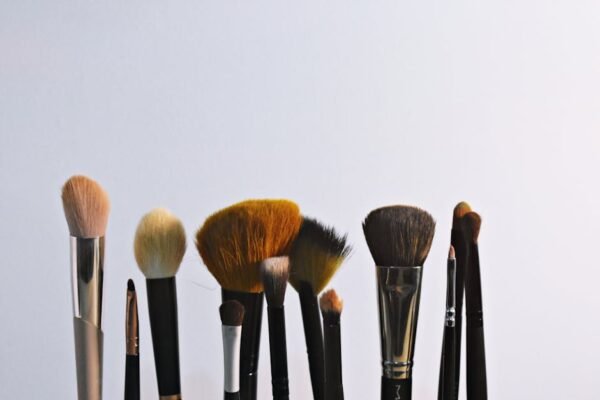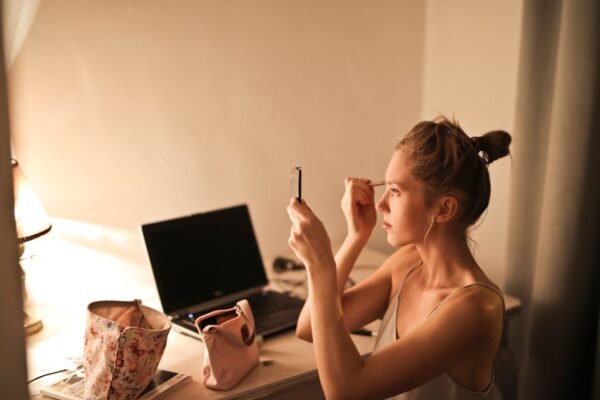Introduction to LED Light Therapy
{“type”:”img1″,”src”:”https://facehubs.com/wp-content/uploads/2024/03/fileUpload-51.jpg”,”alt”:”modern skincare technology”}LED light therapy, a revolutionary approach in the field of dermatology, has gained significant attention for its potential benefits in treating various skin conditions, including wrinkles. This technique uses specific wavelengths of light to penetrate the skin, promising to rejuvenate it by stimulating collagen production and reducing inflammation. With the growing concern over the visible signs of aging, many are turning to LED light therapy as a non-invasive solution.
Unlike traditional skincare routines, LED light therapy involves no chemicals or abrasive procedures, making it an appealing option for those seeking more gentle treatments. The process works by emitting photons into the skin layers, where they are absorbed by photoreceptors in cells, thereby enhancing their natural cellular regeneration and repair processes.
The most common colors of light used are red and blue, where red light is often touted for its anti-aging properties while blue light targets acne-causing bacteria. Despite the promising benefits, skeptics question the efficacy of LED light therapy, especially regarding its ability to minimize wrinkles and fine lines.
This article delves into the effectiveness of LED light therapy for wrinkles, exploring scientific evidence and user testimonials. Furthermore, we examine how to incorporate this novel treatment into your skincare regimen effectively.
As we uncover the truth behind LED light therapy, it's essential to approach with a clear understanding of what the treatment can and cannot do, ensuring realistic expectations among potential users.
Evaluating the Scientific Evidence
Several studies have shed light on the potential benefits and limitations of LED light therapy. Research indicates that red LED light, in particular, can stimulate collagen production, a key factor in maintaining the skin's elasticity and reducing the appearance of wrinkles.
A study published in the Dermatologic Surgery journal highlighted that subjects who underwent LED light therapy experienced significant improvements in skin texture and wrinkle reduction. However, results are typically gradual and depend on consistent treatment over time.
It's also crucial to note that the effectiveness of LED light therapy can vary widely among individuals. Factors such as age, skin condition, and frequency of use play a significant role in determining the outcome. Therefore, while LED light therapy shows promise, it is not a guaranteed solution for everyone.
Experts suggest combining LED light therapy with other skincare practices for best results. Incorporating moisturizers, sunscreen, and a healthy diet can complement the effects of LED treatments, enhancing overall skin health and appearance.
Despite the positive findings, more comprehensive studies are needed to fully understand the long-term benefits and potential side effects of LED light therapy. Research in this field continues to evolve, offering hope for even more effective treatments in the future.
{“type”:”img1″,”src”:”https://facehubs.com/wp-content/uploads/2024/03/fileUpload-56.jpg”,”alt”:”happy person enjoying skincare routine”}Understanding the Treatment Process
LED light therapy sessions typically involve sitting or lying under a light-emitting device for a specified period, often ranging from 10 to 30 minutes. It's a painless procedure that can be done in a dermatologist's office or at home with the purchase of a handheld device or mask.
For those considering LED light therapy, it's vital to select a quality device that emits the proper wavelengths. Not all products on the market are created equal, and some may not provide the desired effects. Seeking advice from a skincare professional can ensure that you choose a suitable option for your needs.
Consistency is key when it comes to LED light therapy. To achieve noticeable results, regular sessions are recommended. Although the therapy is generally safe for all skin types, it's best to conduct a patch test or consult with a dermatologist before beginning treatment, especially for those with sensitive skin.
Aftercare is straightforward — there is no downtime, and individuals can immediately resume their normal activities. Nevertheless, protecting the skin from sun exposure and maintaining a healthy skincare regimen are crucial steps to maximize the benefits of LED light therapy.
In conclusion, while LED light therapy offers a promising avenue for reducing wrinkles and improving skin health, it should be approached with realistic expectations and an understanding of the commitment required to see results.
User Testimonials and Reviews
Personal experiences with LED light therapy vary widely, with some individuals reporting dramatic improvements in skin texture and wrinkle reduction, while others notice more subtle changes. It's important to consider these varied experiences when evaluating the effectiveness of the treatment.
Many users praise LED light therapy for its convenience and non-invasive nature, appreciating the ability to incorporate the treatment into their regular skincare routine. Success stories often highlight noticeable differences in skin firmness and a reduction in fine lines after several weeks of consistent use.
However, some reviewers express disappointment with the outcomes, emphasizing the need for patience and consistent treatment. It's a reminder that LED light therapy is not a quick fix, but rather a long-term investment in skin health.
User reviews also frequently mention the importance of quality devices and professional guidance. Investing in a high-quality LED light therapy system and following a skincare professional's recommendations can significantly impact the results.
As with any skincare treatment, individual results will vary. However, the growing number of positive testimonials suggests that LED light therapy has the potential to be an effective option for those seeking to reduce the visible signs of aging.
Incorporating LED Light Therapy into Your Skincare Regimen
Integrating LED light therapy into an existing skincare routine can enhance its overall effectiveness, providing a multifaceted approach to skin health. Begin by consulting with a dermatologist to determine the most appropriate treatment plan for your skin type and concerns.
Once you've selected a suitable LED light therapy device, start with shorter sessions, gradually increasing the duration as your skin adapts to the treatment. Combining LED therapy with complementary skincare products, such as hydrating serums and antioxidants, can boost its efficacy.
Maintaining consistency is crucial for achieving the best results. Set a regular schedule for LED light therapy sessions, keeping in mind that improvements in skin texture and wrinkle reduction may take several weeks or months to become apparent.
Monitoring your skin's response to LED light therapy is also important. If you experience any adverse effects, consult a skincare professional immediately to adjust your treatment plan accordingly.
By thoughtfully incorporating LED light therapy into your skincare routine, you can maximize its benefits and achieve healthier, more youthful-looking skin.
Conclusion
LED light therapy for wrinkles presents a promising but not guaranteed solution for those seeking to improve their skin's appearance. The science behind the treatment, coupled with user testimonials, suggests potential benefits in reducing wrinkles and improving skin texture.
However, success with LED light therapy requires consistent use, realistic expectations, and a comprehensive skincare strategy. For those willing to invest the time and effort, LED light therapy could be a worthwhile addition to their skincare regimen.
As research continues to uncover the full potential of LED light therapy, this treatment remains a beacon of hope for many in their quest for youthful, radiant skin.





